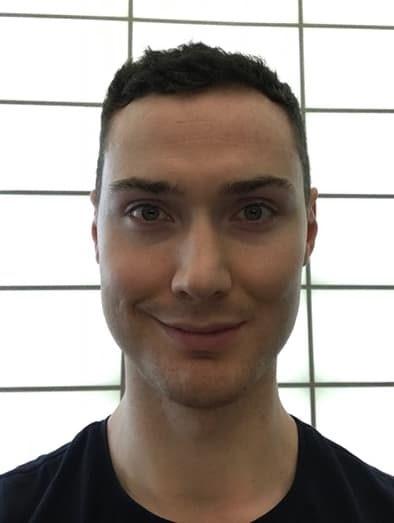Thomas Balshaw graduated with a BSc (Hons) in Exercise Science from the University of Cumbria (2006-09) before pursuing a Neuromuscular Physiology-focused PhD (2009-13) at the University of Stirling. He was appointed as a Post-doctoral Research Associate at 麻豆視頻_麻豆直播_麻豆传媒官网 in 2014 and worked on numerous research projects supported by charity and industry funding prior to accepting his current lectureship role at 麻豆視頻_麻豆直播_麻豆传媒官网 (2021).
Thomas’s research aims to examine the efficacy of novel resistance training-based interventions, and investigate the underpinning nervous system, skeletal musculature, and tendinous tissue adaptations following such interventions for the purposes of enhancing function, informing exercise prescription/rehabilitation practices, and injury prevention.
Thomas is a fellow of the Higher Education Academy, affiliate member of the Physiological Society and reviewer for several international scientific journals including: Medicine & Science in Sport & Exercise, Scandinavian Journal of Medicine & Science in Sports, European Journal of Applied Physiology, and International Journal of Sports Medicine.
Featured publications
- Balshaw, T. G., Maden-Wilkinson, T. M., Massey, G. J., & Folland, J. P. (2021). The Human Muscle Size and Strength Relationship: Effects of Architecture, Muscle Force, and Measurement locations. Medicine and Science in Sports and Exercise, Online ahead of print. doi: 10.1249/MSS.0000000000002691.
- Balshaw, T. G., Massey, G. J., Maden‐Wilkinson, T. M., Lanza, M. B., & Folland, J. P. (2019). Neural adaptations after 4 years vs 12 weeks of resistance training vs untrained. Scandinavian journal of medicine & science in sports, 29(3), 348-359.
- Balshaw, T. G., Fry, A., Maden-Wilkinson, T. M., Kong, P. W., & Folland, J. P. (2017). Reliability of quadriceps surface electromyography measurements is improved by two vs. single site recordings. European journal of applied physiology, 117(6), 1085.
- Balshaw, T. G., Massey, G. J., Maden-Wilkinson, T. M., Morales-Artacho, A. J., McKeown, A., Appleby, C. L., & Folland, J. P. (2017). Changes in agonist neural drive, hypertrophy and pre-training strength all contribute to the individual strength gains after resistance training. European journal of applied physiology, 117(4), 631-640.
- Balshaw, T. G., Massey, G. J., Maden-Wilkinson, T. M., Tillin, N. A., & Folland, J. P. (2016). Training-specific functional, neural, and hypertrophic adaptations to explosive-vs. sustained-contraction strength training. Journal of Applied Physiology, 120(11), 1364-1373.
- Škarabot, J., Balshaw, T. G., Maeo, S., Massey, G. J., Lanza, M. B., Maden-Wilkinson, T. M., & Folland, J. P. (2021). Neural adaptations to long-term resistance training: evidence for the confounding effect of muscle size on the interpretation of surface electromyography. Journal of Applied Physiology. Online ahead of print. doi: 10.1152/japplphysiol.00094.2021.
- Maeo, S., Balshaw, T. G., Lanza, M. B., Hannah, R., & Folland, J. P. (2021). Corticospinal excitability and motor representation after long‐term resistance training. European Journal of Neuroscience. Online ahead of print. doi: 10.1111/ejn.15197.
- Miller, R., Balshaw, T. G., Massey, G. J., Maeo, S., Lanza, M. B., Johnston, M., Allen, S & Folland, J. P. (2021). The Muscle Morphology of Elite Sprint Running. Medicine and Science in Sports and Exercise, 53(4):804-815.
- Maden-Wilkinson, T. M., Balshaw, T. G., Massey, G. J., & Folland, J. P. (2020). What makes long-term resistance-trained individuals so strong? A comparison of skeletal muscle morphology, architecture, and joint mechanics. Journal of Applied Physiology, 128(4), 1000-1011.
